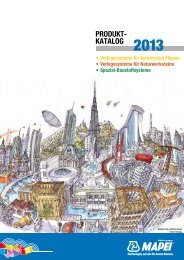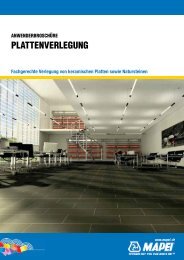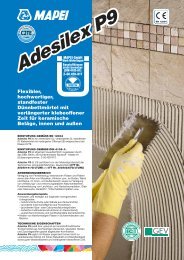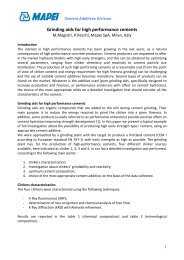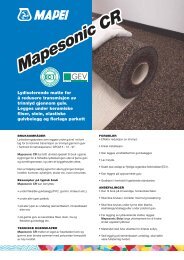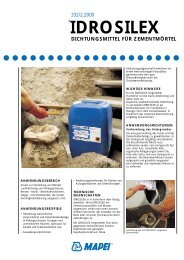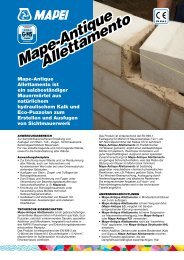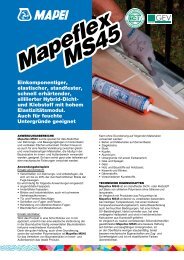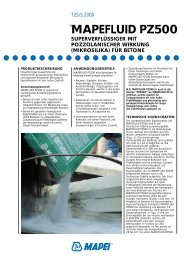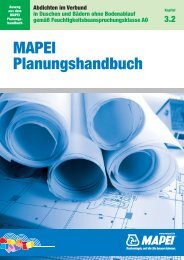WATERPROOFING TERRACES AND BALCONIES - Mapei
WATERPROOFING TERRACES AND BALCONIES - Mapei
WATERPROOFING TERRACES AND BALCONIES - Mapei
Create successful ePaper yourself
Turn your PDF publications into a flip-book with our unique Google optimized e-Paper software.
Fig. 5.4 - Demolition around a drain-pipe<br />
Fig. 5.5 - Extrusion of MAPEPROOF SWELL<br />
Fig. 5.6 - Repairs to a substrate<br />
using MAPEGROUT 430<br />
• remove all the dust from inside the slit and apply a coat of EPORIP<br />
solvent-free, two-component epoxy adhesive on the surface of the slit.<br />
Apply EPORIP on the substrate, which should be dry or only slightly<br />
damp, making sure it penetrates into the particularly rough and porous<br />
areas to guarantee a perfect bond over the whole surface;<br />
• apply MAPEPROOF SWELL one-component hydro-expanding paste<br />
for waterproof seals at the bottom of the slit (Fig. 5.5);<br />
• repair the substrate while the EPORIP is still fresh with MAPEGROUT<br />
430 fine-grained, fibre-reinforced, compensated-shrinkage thixotropic<br />
mortar (Fig. 5.6).<br />
If there are cracks in the floor, before continuing with the next steps, remove<br />
the cracked tiles and open the cracks (with a hand-grinder for example).<br />
Remove all traces of dust, seal the cracks with EPORIP and sprinkle the<br />
surface with quartz (fresh on fresh) to create a good gripping surface. The<br />
cracks in the floor must be carefully analysed to check if they have formed<br />
as the result of a control joint made in the underlying screed whose pattern<br />
has not been traced on the floor, a joint created naturally in the substrate<br />
due to the lack of control joints when installing the screed or a structural joint<br />
whose pattern has not been traced in the superstructure. In such cases,<br />
after removing the area of floor involved, the crack must be opened up with<br />
a hand grinder and sealed as described below and according to the type of<br />
joint. If the problem is due to a structural joint whose pattern has not been<br />
traced on the screed or floor, they must be demolished locally to bring the<br />
structural joint to the surface. The joint must then be sealed as described<br />
below. If the correct slope needs to be restored, dips and hollows need to<br />
be eliminated and the voids formed after removing the tiles need to be filled,<br />
use ADESILEx P4 quickhardening cementitious smoothing and levelling<br />
compound for internal and external applications, for layers of from 3 to 20<br />
mm. Apply the mix using a long, metal trowel. If necessary, several layers<br />
21



